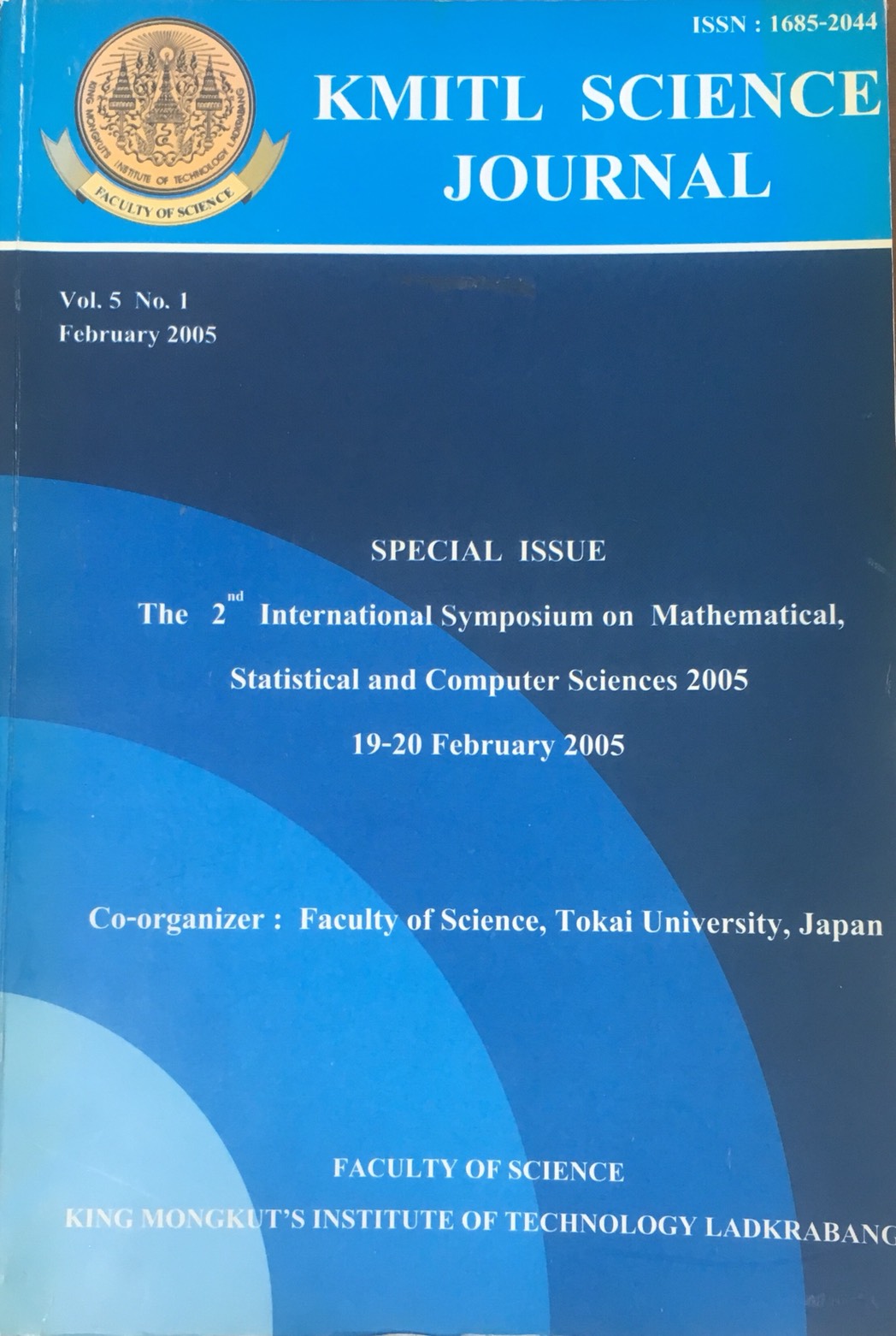Analysis of Adaptive Cluster Sampling Utilizing Standard Software Packages Without Complex Programming
Main Article Content
Abstract
Simple random sampling with or without replacement is the easiest to analyze using standard software, such as SAS, SPSS, Minitab, etc. Better population estimates can be obtained through more complex sampling design, but this introduces analysis issues. For example, regression is very straightforward with simple random sampling, but this is not always the case when more complicated sampling designs are used, such as adaptive cluster sampling. A serious concern with regression estimates introduced with many complicated designs is lack of independence, a necessary assumption. This paper covers an effective manner to analyze data collected from adaptive cluster sampling designs using standard software. Also, included is sample SAS code.
Keywords: Adaptive cluster sampling, Hansen-Hurwitz, SAS
Corresponding author: E-mail: dryer@hotmail.com , ctchao@email.stat.ncku.edu.tw
Article Details
Copyright Transfer Statement
The copyright of this article is transferred to Current Applied Science and Technology journal with effect if and when the article is accepted for publication. The copyright transfer covers the exclusive right to reproduce and distribute the article, including reprints, translations, photographic reproductions, electronic form (offline, online) or any other reproductions of similar nature.
The author warrants that this contribution is original and that he/she has full power to make this grant. The author signs for and accepts responsibility for releasing this material on behalf of any and all co-authors.
Here is the link for download: Copyright transfer form.pdf
References
[2] Hanselman, D.H., Quinn, T.J., Lunsford, D, Heifetz, J and Clausen, D 2003 Applications in adaptive cluster sampling of Gulf of Alaska rockfish. Fishery Bulletin 101(3), 501-513.
[3] Conners, M.E. and Schwager, S.J. 2002 The use of adaptive cluster sampling for hydroacoustic surveys. Ices Journal of Marine Science 59(6), 1314-1325.
[4] Lo, N. CH, Griffith, D and Hunter, JR 1997 Using a restricted adaptive cluster sampling to estimate Pacific hake larval abundance, California Cooperative Oceanic Fisheries Investigations Reports 38: 103-113.
[5] Smith, D.R., Conroy, M.J. and Brakhage, D.H. 1995 Efficiency of adaptive cluster sampling for estimating density of wintering waterfowl. Biometrics 51 777-788.
[6] Correll, R.L. 2001 The use of composite sampling in contaminated site- a case study. Environmental and Ecological Statistics 8(3), 185-200.
[7] Boomer, K, Werner, C and Brantley S 2000 CO2 emissions related to the Yellowstone volcanic system 1. Developing a stratified adaptive cluster sampling plan, Journal of Geophysical Research-Solid Earth, 105 (B5): 10817-10830.
[8] Thompson, S.K. and Collins, L.A. 2002. Adaptive sampling in research on risk-related behaviors. Drug and Alcohol Dependence 68 S57-S67.
[9] Thompson, S.K., and Seber, G.A.F. 1996 Adaptive Sampling. New York: Wiley.
[10] Muttlak, H.A. and Khan, A. 2002 Adjusted two-stage adaptive cluster sampling. Environmental and Ecological Statistics 9(1), 111-120.
[11] Christman. M.C. 2003 Adaptive two-stage one-per-stratum sampling. Environmental and Ecological Statistics 10(1), 43-60.
[12] Chao, C.T. 2004 Ratio estimation on Adaptive Cluster Sampling. Journal of Chinese Statistical Association 42(3), 307-327.
[13] Dryver, A.L. and Chao, C.T. 2005 Utilization of auxiliary information in adaptive cluster sampling, working manuscript.
[14] Thompson, S.K. 2002 Sampling. 2nd Ed. New York: Wiley.


